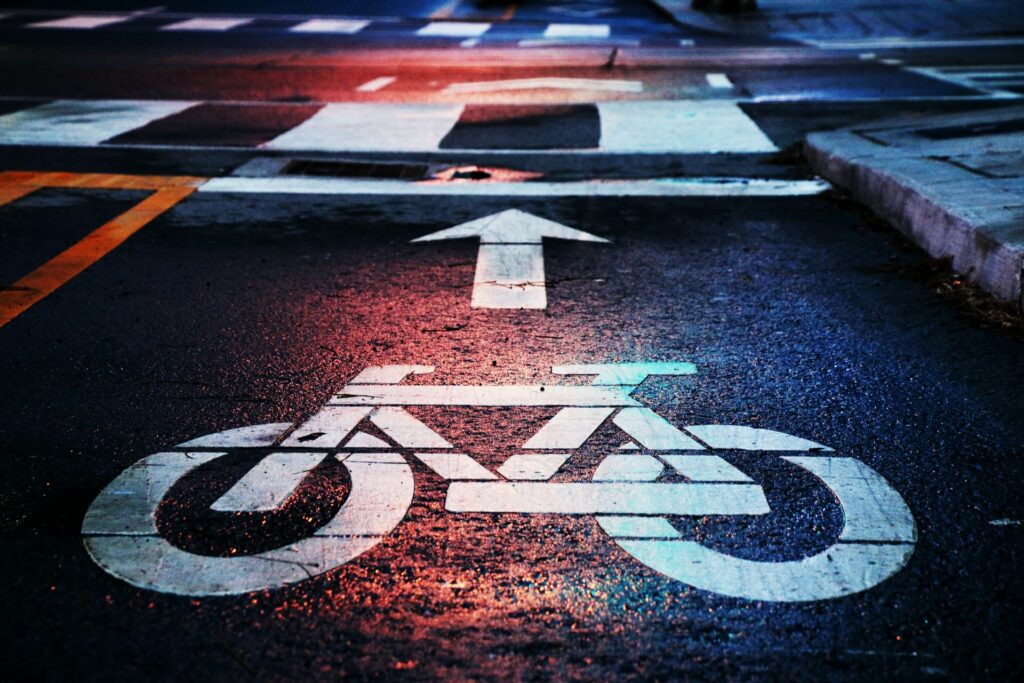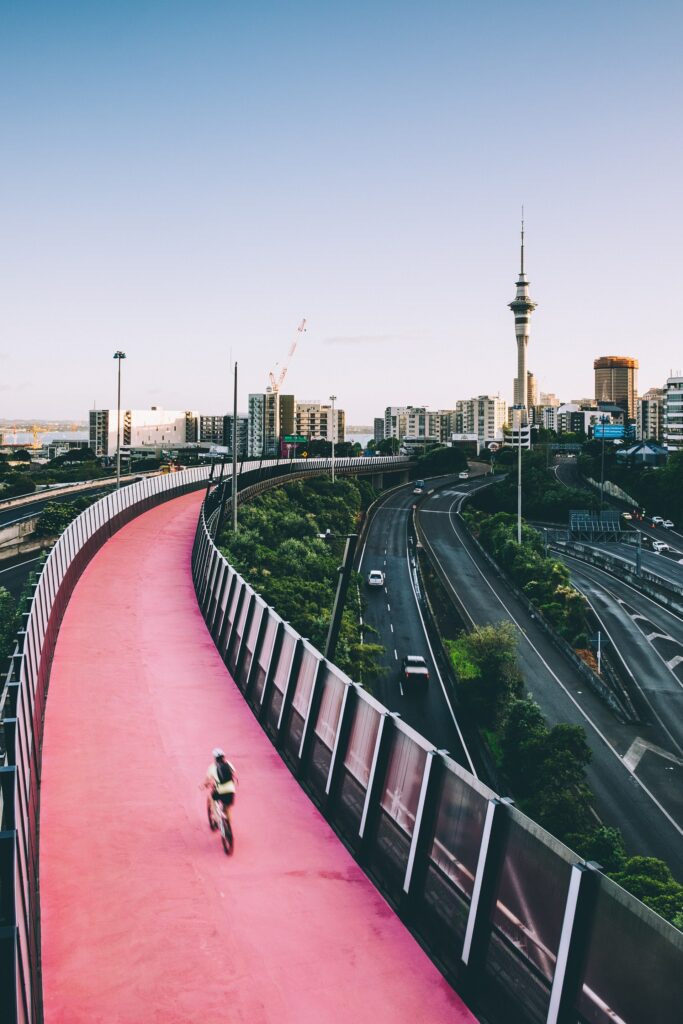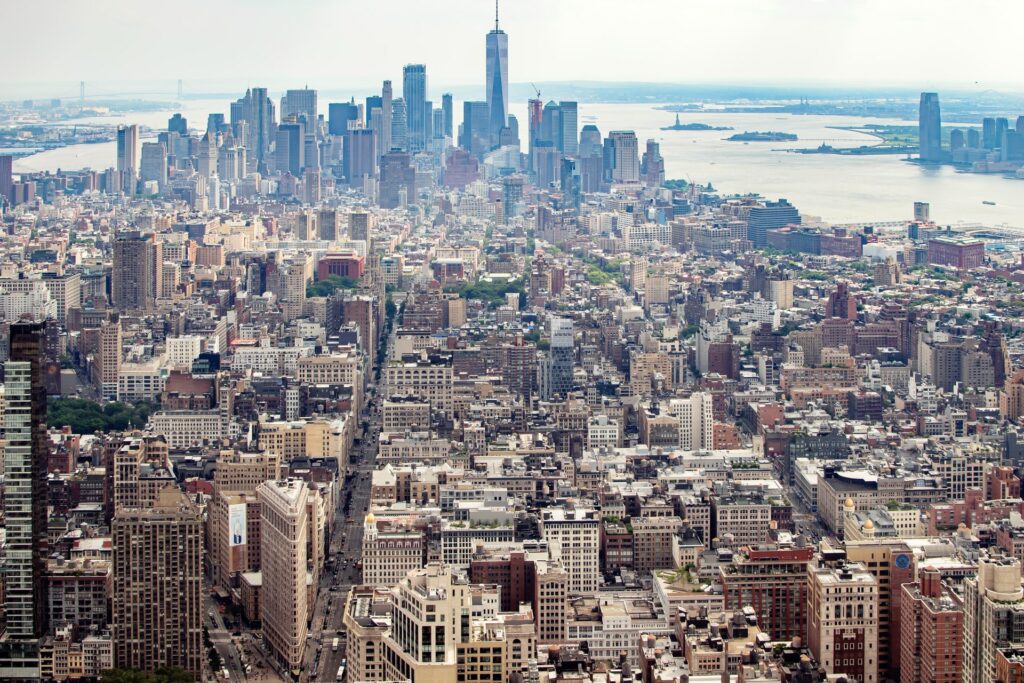Cycling to break the cycle – How the Covid-19 pandemic demonstrated that car dependency in cities is surmountable

When the Covid-19 pandemic hit, the entire world came to a screeching halt. Every aspect of life was affected. While it naturally was difficult to see any positive aspects about the pandemic, soon some favourable headlines were in the news. The global greenhouse gas emission output was, for a short amount of time, declining rapidly, as industries and traffic alike were on pause. Megacities, especially in Asia, where Covid-19 lockdowns were especially strict, such as Peking, New Delhi, Mumbai, Seoul, and many others experienced record-breaking clear skies. In Northern India, people were able to see the snow-capped mountain tops of the Himalayas – for the first time in over three decades, which means that generations potentially grew up without ever seeing an unpolluted blue sky. Apart from this aesthetic aspect, the suddenly absent air pollution was also beneficial for human health. So-called “smog” ozone, in cities to large parts caused by fossil-fuel burning traffic, has major implications for public health, especially for those suffering from chronic respiratory diseases. A study from 2015 assessed that per year, an estimated 3.3 million premature deaths are attributable to outdoor air pollution (Lelieveld et al. 2015) while another study from the same year estimated that vehicle tailpipe emissions alone cause 385,000 premature deaths per year (Anenberg et al. 2015). Last but not least, the pandemic demonstrated that rapid and impactful reduction of emissions driving climate change was (although forced) possible, albeit for only a short amount of time.
Observations like these – rapid reduction of emission output and visible blue skies in megacities usually cloaked by thick smog contributed to big picture ideas, such as the “Great Reset” by the World Economic Forum and countless Building Back Better/Greener initiatives. The climate crisis, as well as the Covid-19 pandemic, indeed share some key characteristics. Both have effects on a global scale (causing fatalities, undermining livelihoods), both require drastic and unprecedented adjustments to our way of living, and consequences from both are, will be (or would have been) less costly to prevent than to cure. The fatal misconception regarding the climate critics shared by too many policymakers, however, is that this threat is less immediate or not a threat at all. Rapid and all-embracing solutions are needed, and Covid-19 demonstrated that this might be possible, even on a global scale.

One of these potential solutions happened, rather coincidentally, in the wake of the pandemic and is directly linked to the suddenly clear skies in polluted megacities. As social distancing, working in home-office, and general lockdowns took place, usually busy inner-city highways and traffic hubs found themselves deserted. As everybody was staying at home, so were the millions of cars. This led to an awareness seldomly illustrated this clear: how car-dependent most of our cities are. So-called car dependency describes the concept of city layouts which, often heavily, favour cars over alternate forms of transportation, namely public transit, walking, or – cycling. Car dependency is a vicious cycle, where transport planning is car-oriented, leading to reduced overall travel options and thus car-oriented land use planning (e.g., generous parking supply). All this, in turn, leads to increased car ownership. This is harmful to human health (air pollution), planetary health (emission output), and urban design (space devoted to cars instead to humans). New York provides a perfect example of car dependency. In New York City, out of 3.1 million households, 1.4 million own a car. A minority of car owners, especially since the unit “households” mostly includes more than just one member, gets to use ridiculous large shares of city spaces while the majority cannot use this space for anything since it does not own a car. In Manhattan alone, more than 15% of total space is devoted to cars (an area for times as large as Central Park). Manhattan, ironically, already is one of the most car-free places in the US, especially since cycling has seen a major covid-related uptake in New York City.

The pandemic helped to illustrate this unhealthy dependency on cars. With being cars being absent, many of the streets and spaces solely devoted to cars were quickly turned into different spaces, like outdoor-seating options for local pubs and restaurants or traffic-calmed cycling lanes. Headlines were full of dominantly European cities like Paris, London, Dublin, Berlin, Brussels, Tirana, and many more, where pop-up bicycle lanes, also called “corona cycleways”, were constructed practically overnight. The New York Times commented on this development, stating that “the pandemic is speeding up an ecological transition to limit car traffic and cut pollution” (Alderman 2021). Cycling proved to be the mode of transport most risk-free for Covid-19 transmission. Simultaneously, it reduced air pollution and emission output. Europe and North America are not the only places where the popularity of cycling has surged. Similar observations have been made in many African cities. However, just like many in most European cities, infrastructure is still among the biggest issues for cycling. According to the World Health Organization, African cities are the world’s deadliest for cyclists (Coulibaly 2020) – changes in infrastructural planning instigated by the pandemic, however, could change that. Coming back to Europe, in Paris, for instance, many of the pop-up bike lanes were intended to be temporary only, but the city considers making them permanent if they prove to be successful, which appears to be the case. In a recent study examining European cities and their recent cycling policies, large increases in cycling have been assessed, ranging from 11% to 48% on average, highlighting the strong correlation between the provision of cycling infrastructure and the uptake of cycling and the number of cyclists (Kraus & Koch 2021). This new cycling infrastructure could generate between $1 to 7$ in health benefits annually (ibid.), due to less air pollution, fewer traffic injuries and fatalities as well increased sporting levels of those who settle for the bike instead of the car.
Taking away the space solely devoted to cars is an illustrative example of how the pandemic, as bad as it was and still is, can indeed provide an opportunity to build back better and/or greener. Urban transport is one out of such limitless opportunities to actually achieve that. Inarguably, cities will play a crucial role in climate change mitigation, with far more than half the global population living in cities. Limiting or banning private cars in cities would have a massively beneficial impact on human health and contribute to slowing down global warming while also providing potential space to green up cities or for other communal uses. Parks can be used by everyone – parking lots cannot. The overarching question will be whether the pop-up cycle lanes are here to stay and if they can resist the angry pushbacks by SUV drivers who are still undiscerning about why driving big, fossil fuel-burning cars might be a problem. While reports are piling up about pop-up cycle lanes being removed, so do reports about ever-rising demand for bike and bike parts, a development termed the “Great Bicycle Boom of 2020” by the BBC (Bernhard 2020). This boom did not abate in 2021 and hopefully, it will stay this way for 2022. This, after all, might be a sign that the observed change is here to stay – or yet to come. The chance for city transport infrastructure to be built back better should not be wasted.
Sources & additional information:
- Alderman, L. (2020): ‘Corona Cycleways Become the New Post-Confinement Commute. In: The New York Times.
- Anenberg, S. et al. (2019): A global snapshot of the air pollution-related health impacts of transportation sector emissions in 2010 and 2015. International Council on Clean Transportation, Climate & Clean Air Coalition.
- Bernhard, A. (2020): The great bicycle boom of 2020. In: BBC.
- Coulibaly, L. (2021): Cycling in Africa is booming. These activists want to make it safe. World Economic Forum.
- Kraus, S., & Koch, N. (2021). Provisional COVID-19 infrastructure induces large, rapid increases in cycling. Proceedings of the National Academy of Sciences USA, 118 (15).
- Lelieveld, J., Evans, J. S., Fnais, M., Giannadaki, D., & Pozzer, A. (2015). The contribution of outdoor air pollution sources to premature mortality on a global scale. Nature, 525 (7569), 367-371.
- Manjoo, F. (2020): I’ve Seen a Future Without Cars, and It’s Amazing. In: The New York Times.
- Manzanedo, R. D., & Manning, P. (2020). COVID-19: Lessons for the climate change emergency. Science of the Total Environment, 742, 140563.